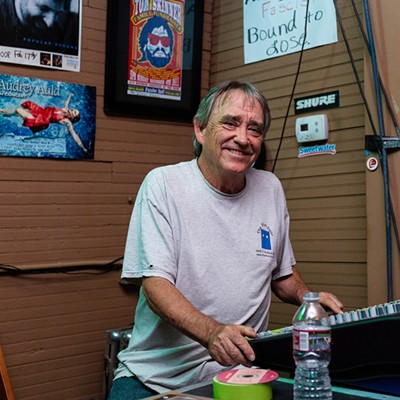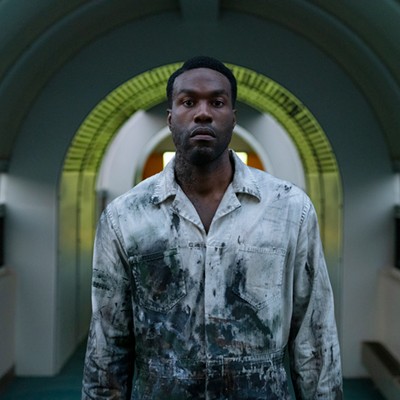
On the morning of May 13, 2010, he and a friend were hanging out on gym bleachers before school when they were approached by a boy who’d been harassing Ty.
A fight ensued. Eleven-year-old Ty went home, suspended.
Later that morning, his parents said, the sixth-grader pointed a .22-caliber gun to his head and killed himself.
Kirk Smalley, Ty’s father, doesn’t look like a crusader. Tall and gangly, he’s a country boy through and through. The walls of the Smalley home are adorned with the mounted heads of deer and antelope. Since his son’s death, however, Smalley has made it his life’s work to educate people about bullying, a commitment that has taken him to nearly 400 schools nationwide.
“We’re not in it to change our school. We’re not in it to change America’s schools,” he said. “We’re in it to change the world.”
His story is among a handful prominently featured in Bully, a powerful documentary that opens Friday at AMC Quail Springs Mall 24. While the movie has only recently hit theaters, it has generated months of controversy, thanks to a prolonged ratings battle pitting its distributor, The Weinstein Company, against the Motion Picture Association of America.
At the center of the film are the tales of a few Oklahoma youths who were terrorized by bullying.
Not that viewers need to read much into that. Bully director Lee Hirsch, himself a victim of childhood bullying, said the problem transcends geographic or socioeconomic boundaries. According to the American Academy of Child & Adolescent Psychiatry, roughly half of all children are bullied at some point during their school years, with about 10 percent harassed on a regular basis.
“I knew there were millions and millions of people who had a connection to bullying,” Hirsch said, “and there hadn’t been any [film] out there that was for them, that was real and raw and truthful — and also empowering.”
Capturing Bully on film

In examining the social epidemic, Hirsch shot footage in schools from Massachusetts to Mississippi. Among the five stories that wound up making the final cut is that of Kelby Johnson. As a teenager growing up in Tuttle, she had come to terms early on with her being gay. Many of her high school classmates were less receptive. Students, and even teachers, taunted her.
“I remember one teacher who was calling roll,” recalled Johnson, “and she was like, ‘Boys,’ and then said ‘Girls,’ and then she stopped and said ‘Kelby.’ There were a lot of snide remarks from teachers. None of them had my back. They joined in with the kids, a really unsupportive school system.”
At
one point, a group of boys in a minivan even ran into her as she stood
on the side of a street. Johnson’s head cracked the windshield, but
miraculously she avoided serious injury.
In 2010, Hirsch’s cameras were in Tuttle following Johnson when the filmmaker learned of Ty Field- Smalley’s suicide in Perkins.
In retrospect, Kirk Smalley said, it appeared that the quieter Ty was at home, the worse he was being bullied at school.
“We knew he was being picked on,” he said.
The
boy’s mother worked for the school district. Her complaints about Ty’s
treatment brought her crossways with her supervisor, according to Kirk
Smalley.
“At that point, [Ty] quit telling us about it,” he said. “He was trying to protect his mama."

Philip
and Jackie Libby knew all too well the implications of a tight-lipped
child. They were living in Sioux City, Iowa, when they learned that
Hirsch was shooting footage at the middle school of their son, Alex. Hirsch had noticed the boy, then 12, sitting alone at school and eventually asked the Libbys if he could document Alex’s life at school and home.
“I wasn’t too hot on the
idea,” Jackie Libby recalled. “In the end, we did it for Alex. We needed
to know why he was so sad all the time. He wouldn’t tell us. We thought
the best way to find out is to have someone follow him, a third party
who could maybe tell us what was going on.”
They
were shocked by what they discovered. Hirsch’s camera chronicled the
boy being subjected to almost daily verbal and physical abuse.

The
Libbys eventually decided they could no longer remain in Sioux City.
The couple and their five kids moved to Oklahoma, where they had
developed a bond with the families of Ty Field-Smalley and Kelby
Johnson.
Since their move, they said, Alex, who is now 15, has thrived at his Edmond high school.
“He
got his grades back up to As and Bs, which we hadn’t seen since
elementary school, and he doesn’t have problems at school,” Jackie Libby
said. “We love it here. The schools are great and the people are very
genuine.”
Rating reality
Until last week, The Weinstein Company was set to release Bully without a rating after the MPAA indicated that one too many F-bombs would necessitate an R rating.
Hirsch
and others protested that the restriction would keep the movie from
being seen by young people, who arguably have the most to gain from it.
They were backed by an online petition signed by nearly 500,000 people.
As weeks went by, however, it appeared the MPAA wouldn’t budge.
That changed on April 5, when the MPAA announced Bully will be rated PG-13. Hirsch made slight edits for the rating, but left intact a crucial and jarring scene aboard a school bus.
Hirsch said he thinks Bully arrives
at a sort of “tipping-point moment” in which more and more young people
are making a conscious decision to reject bullying.
“I
think they’re wanting to understand how to make a change,” he said.
“They’re starting to gain tools, and folks like us and many others are
out there working hard to give them support and encouragement to step up
in the face of it and stand up to it.”
Kirk
Smalley isn’t waiting for the movie to change hearts and minds. He
continues to travel the country, talking to schoolchildren and parents.
But he said he believes Bully can be a galvanizing force in the fight.
“All kids need to see it. It’s a really powerful thing,” he said.











